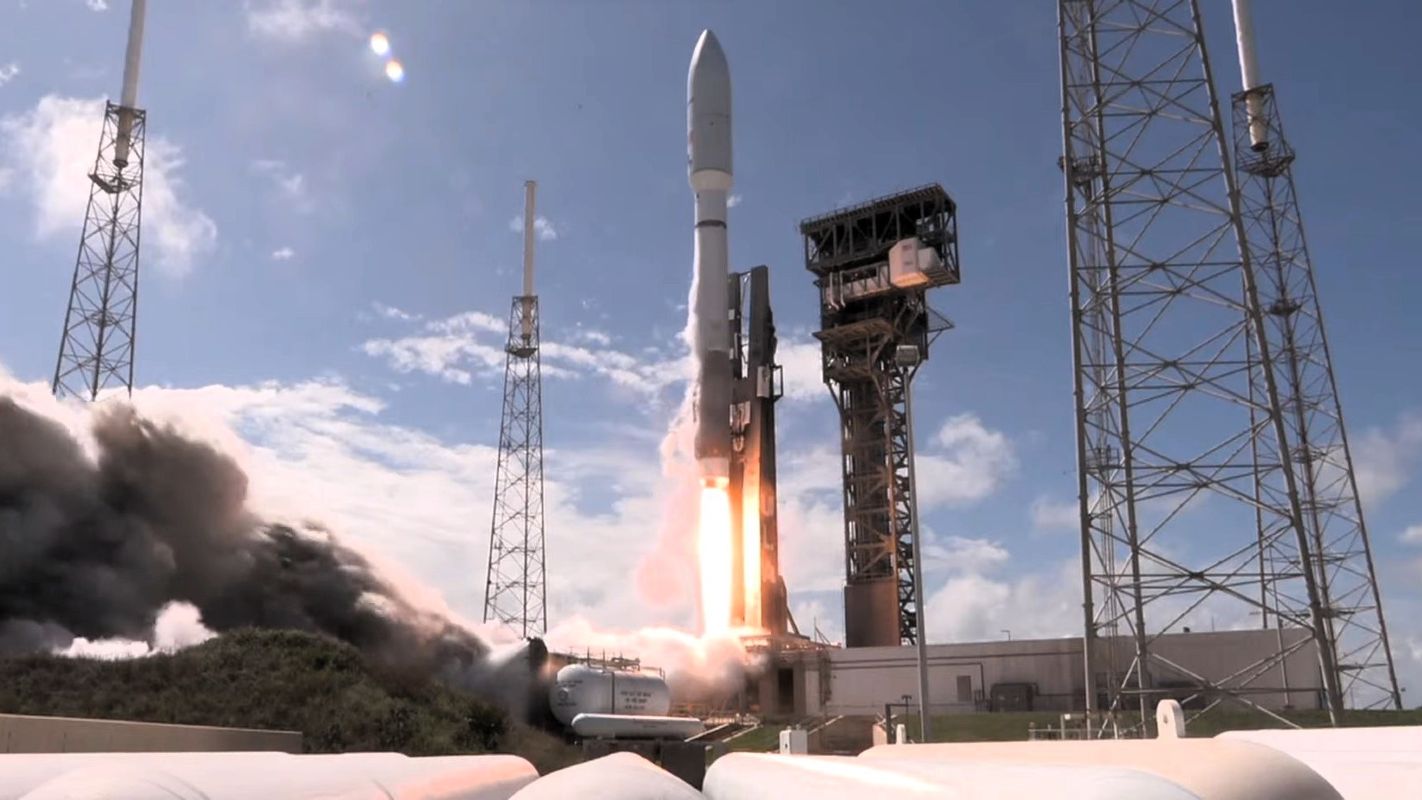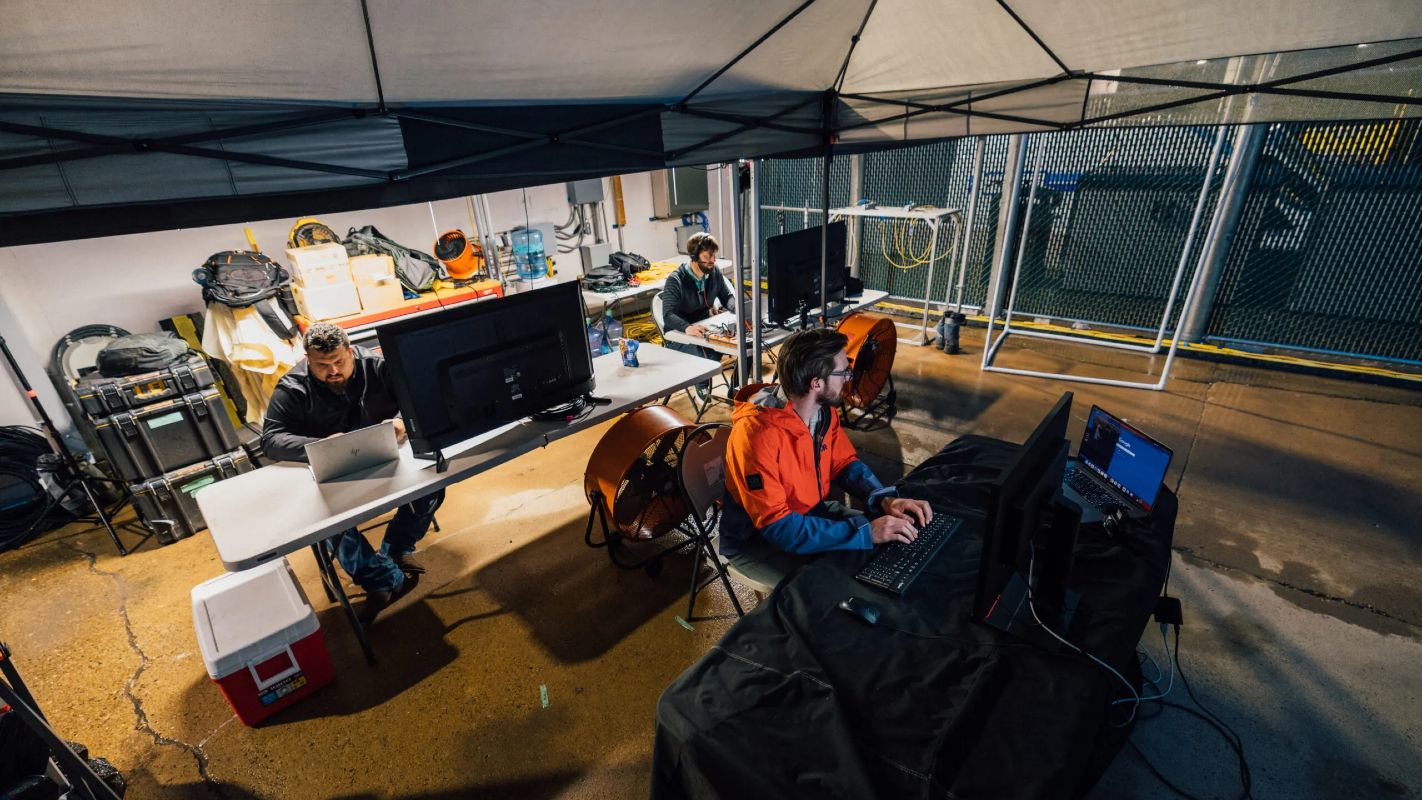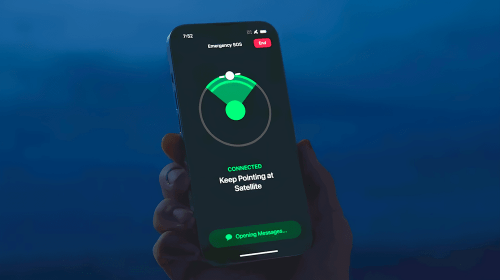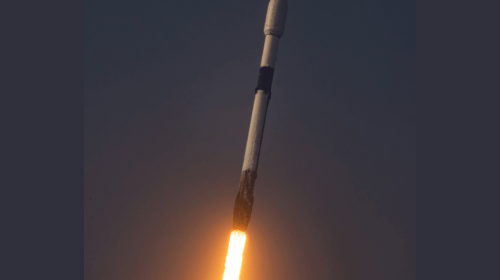Launch Preparations Underway
Apr 17, 2025
Amazon’s ambitious Project Kuiper broadband constellation is expected to have more than 3,200 satellites in the end, and United Launch Alliance is gearing up to deploy the first 27 satellites of the constellation. The launch was originally scheduled for an earlier date, and now it is for April 28, the start of Amazon’s entry into the satellite internet market. The first satellites will be launched by the first of four missions using a United Launch Alliance Atlas V rocket for a cost of $153 million and a year behind the initially projected schedule as the company races to meet regulatory deployment deadlines. This mission is significant beyond being the first operational deployment for Project Kuiper, as Amazon’s entry into satellite broadband market is part of a broader strategic push into a more crowded space with OneWeb having early advantages.
 United Launch Alliance’s Atlas V rocket launches Amazon’s Project Kuiper protoflight in 2023. Credit: ULA
United Launch Alliance’s Atlas V rocket launches Amazon’s Project Kuiper protoflight in 2023. Credit: ULA
The satellites also have improved phased array antennas, processors, solar arrays, propulsion systems and optical inter-satellite links, according to Amazon, which added that these satellites represent major improvements over the two prototypes ULA launched on an Atlas V in 2023. The successful prototype tests had demonstrated fiber like internet speeds as Rajeev Badyal, vice president of project Kuiper, had confirmed, and work was set to proceed on more than 3,200 production satellites based on similar architecture to the prototypes. Satellite deployment was meant to be in the first half of 2024, with beta trials with potential customers including Verizon and Vodafone following later in the same year, but unspecified delays have pushed beta services into 2025. But these delays add more pressure, as Amazon has strict regulatory rules to put half of the constellation in place by July 2026 under rules related to its Federal Communications Commission license, with the rest to be deployed by July 2029.
Technical Challenges and Testing
According to Rajeev Badyal, extensive testing had been conducted on the ground to prepare for this first mission, but some things could only be tested in actual flight conditions. This mission would be the first time they would fly their final design of satellite and deploy that many satellites simultaneously, he said. Badyal kept a flexible determination, no matter how the mission played out, it was just the beginning of their journey, and they had all the components they needed to learn and adapt as they prepare for multiple subsequent launches in the next few years. Amazon’s commitment to a competitive constellation that can deliver high speed internet globally, even to regions where conventional broadband infrastructure has not been established, is reflected in the technical complexity of the Project Kuiper satellites. These technical advancements are essential for Amazon’s strategy of entering the market with greater capabilities than competitors, although they start later.
 Amazon engineers at the testing facility in McAllen, Texas. Credit: Amazon
Amazon engineers at the testing facility in McAllen, Texas. Credit: Amazon
The constellation will function as an integrated mesh network, with satellites primarily communicating with each other rather than relying heavily on ground station connections. The processing improvements also seem to indicate Amazon is focusing on edge computing abilities to decrease latency and bring more sophisticated applications to their satellite network. Moreover, the upgrades to the solar arrays and propulsion systems hint toward Amazon’s emphasis on the longevity of satellite life and flexibility of operations, both essential elements for the economic feasibility of such a mammoth constellation rollout. For Amazon, these technological enhancements are significant investments in research and development as Project Kuiper is not just an entrant in the satellite internet market, but could be a technological leader even if it is late to the game.
Launch Partners and Logistics
The Atlas V rocket will use its most powerful configuration, deploying the satellites 450 kilometers above Earth, with five solid rocket boosters in addition to the main booster, Amazon said, describing the KA-01 mission as the heaviest payload ever flown on an Atlas V rocket. The company has contracted ULA to launch seven more Atlas V missions for Project Kuiper and 38 using its larger Vulcan Centaur rocket. Meanwhile, ULA’s CEO Tory Bruno recently predicted about a dozen launches this year for Amazon and other customers split between Atlas V and Vulcan, ULA’s next generation rocket that suffered an anomaly during its second flight in October. They were also ready and prepared to launch as spacecraft came available, Bruno said, commenting the company’s ambition to reach a baseline tempo of two launches per month at the end of the year and 20 launches in the following year.
 Amazon will boost production and satellite deployment after Project Kuiper’s first launch. Credit: Amazon
Amazon will boost production and satellite deployment after Project Kuiper’s first launch. Credit: Amazon
Beyond ULA, Amazon’s multibillion dollar launch arrangement for Project Kuiper includes three Falcon 9 missions from SpaceX, 18 Ariane 6 launches from Arianespace, and up to 27 New Glenn rockets from Blue Origin. The diversified launch strategy taken by Amazon is also a result of the risks they are taking with one single launch provider, especially during deployment deadlines. Arianespace, however, has projected only four more flights this year for Ariane 6, its next generation rocket that, on its first commercial flight in March, lifted off from the European spaceport at Kourou, French Guiana, at 11:24 a.m. Eastern, with payload deployment scheduled about an hour after liftoff following a second burn of the upper stage. Blue Origin expects the next flight of its New Glenn rocket to come as soon as late spring after wrapping up an investigation into the failed booster landing on the first launch of the rocket this year.
International Expansion Plans
An Amazon spokesperson said that the next launch would use another Atlas V rocket and that they were already shipping and processing satellites for that KA-02 mission. They would, they said, share more details closer to the launch date, but overall, they intended to continue accelerating their operational tempo moving forward. Even before the first operational satellites are launched, the international dimension of Project Kuiper is already forming, showing Amazon’s global ambitions for this network. Amazon’s strategy of using existing telecommunications providers in various markets to leverage as opposed to trying to build customer relationships from scratch is reflected in these international partnerships. Compared to competitors like Starlink, which has mostly pursued direct to consumer models in most markets, this approach is a little different. This will help Amazon win faster regulatory approvals and access to markets by tapping into the customer relationships and technical infrastructure of the national telecommunications giants, with whom it is partnering. With Japanese entities being the first of many similar arrangements Amazon will forge around the world as the Project Kuiper constellation begins to come up, the partnership will also likely be the first of many similar arrangements the company will make globally as the service goes live.
The launch of Amazon’s Project Kuiper represents a significant milestone in the ongoing transformation of global internet infrastructure and reflects the increasing importance of space-based assets in addressing digital connectivity challenges worldwide. With this ambitious project, Amazon is positioning itself to compete directly with established players like OneWeb and emerging satellite internet providers, bringing substantial resources and technological capabilities to an increasingly crowded market. The potential impact of Project Kuiper extends far beyond corporate competition, as successful deployment could help bridge the digital divide that persists across rural and remote regions globally, providing high-speed internet access to locations where terrestrial infrastructure remains economically unfeasible.





